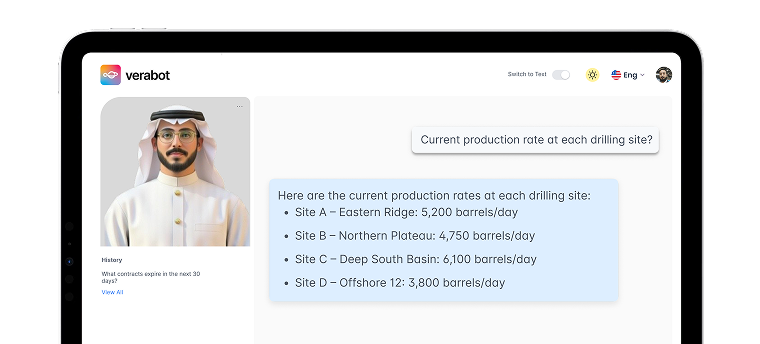The last few years for retailers around the globe haven’t been ideal. From uncertain economic conditions to rising inflation to the recession onslaught, financial concerns have consistently increased. This means retailers might experience reduced demand in upcoming years.
But despite all the indicators showing red, retailers might still have hope.
Although many graphs have shown consistent downward patterns and negative growth, that might not be the only trouble they’ll face; inflation is yet another challenge ready to storm along with the recession.
Amidst all these financial crises, retailers can easily foresee reduced demand in upcoming years, denting their business plans, forcing them to adapt and shift focus, and potentially altering their strategies.
However, it is not all bad for the retail industry. In recent decades, the increase in acceptance of technology solutions has allowed retailers to leverage the power of big data and retail data analytics to navigate the digital maze with authority.
In 2021, the global big data analytics market was valued at around $240 billion, and it is forecasted to surpass the careful market of $650 billion by 2029, and retail is undoubtedly among the top use cases.
The retail industry is employing technology as its driving force to deliver ideal user experiences to consumers using data analytics, improving operational efficiency.
In this article, we will explore in detail how data analytics in retail and big data are leveraged for comprehensive digital retail solutions, but before that, let’s quickly understand what both these terms mean.
What are Big Data & Data Analytics?
Big Data, in simple words, is an accumulation of large data sets that are often complex and gathered from multiple data sources. As the name suggests, Big Data is so big that traditional software cannot process it, and that is why it needs special treatment. Big Data is used to extract useful information to address business needs and solve difficult problems that otherwise seemed undoable and impossible.
Data Analytics, on the other hand, is the technique or process that is used to analyze raw data in order to arrive at conclusions. This technique is used to process tons of data to extract insights, build and automate procedures, and create algorithms that later contribute to efficient outcomes.
What Are Two Ways That Data Analytics Benefits Retailers?
Data analytics has gained significant popularity over the last few years, but in the retail sector, it is yet to register widespread use. So, what are the ways in which data analytics can benefit retailers? There are quite a few, but let’s see the statistics first.
According to an HBR study, around 95% of organizations follow legacy and dated processes, and only 5% of organizations rely on data-driven approaches in the retail sector.
This tells us that the acceptance of technology, and data analytics, to be specific, in the retail businesses is significantly low, and now is the time to make the most of it in this domain as well.
Now, without delaying it further, let’s explore how data and effective use of data analytics can benefit retailers:
1. Understanding the Customer & Personalizing Your Shopping Experience for Them
Retail data analytics or retail analytics allow retailers to have a 360-degree view of the customer’s profile by gathering related data from multiple sources. These include sales transactions, social media touchpoints, customer interactions, and more.
This develops a comprehensive profile, having information regarding customers inclusive of purchase history, preferences, behaviors, engagement with the brand’s assets, and demographics. Through this, retailers can access and extract useful information and insights into their customers and understand how they process different decisions.
Retailers can understand a customer’s profile on a lot of touch points such as interests, LTV (lifetime value), historical buying analysis, purchase strength, and others. This will help retailers design and deliver specific and personalized brand experiences that resonate with each user or buyer throughout the omnichannel experience.
Other than uplifting the user experience, retailers can craft their marketing strategies according to and win at marketing with more authority by segregating customers into segments and building recommendation-oriented purchases that align with the individual’s unique requirements.
2. Strategically Devise & Simplify the Customer Journey
The increased use of various digital channels has made digital journeys increasingly complicated. Today, the customer journey or the buying journey is divided into multiple stages. It begins with research across channels, analysis, demonstrations, purchasing, checkouts and servicing, and post-sales support.
Using big data analysis, retailers can understand the nuances and craft a targeted buying journey by:
- Discover the customer’s preferred channels of interaction
- Pinpoint the touchpoints that captivate and engage customers the most
- Evaluate the impact and effectiveness of promotional content
- Classify key stages critical for customer satisfaction during and after the purchase process
Having this knowledge can greatly help retailers in developing to-the-point and personalized marketing strategies and campaigns and adjusting the support and servicing standards to uplift the overall customer experience.
- Bonus Tip: Make Your Operations Optimal & Manage Inventory Efficiently
Businesses having the right data collection processes and tools are several steps ahead. They can leverage the data to ensure sustainable growth by effectively utilizing resources based on the information extracted.
Any company that manages business transactions, inventories, and end-user interactions and has all the records can optimize its operations and lay out a path toward a sustainable future.
Today’s systems can give insights into various end-point metrics, including customer counts, average basket size, sales patterns and trends, profit margins, expenses, and much more. This can enable seamless and informed decision-making regarding operational efficiency.
For example, through data collected this way, companies can schedule/predict shelf stocking, optimize staffing needs, and manage order status. This will significantly lower the risk of operational bottlenecks, making customers furious and causing overstocking or stock wastage troubles.
Leveraging Big Data & Data Analytics in Retail
Big Data and Data Analytics have several applications in retail. Here are the 5 most impactful applications of these technologies in today’s life.
· Tailored & Targeted Marketing Efforts
The majority of customers today are well aware of what they want, and that is exactly what they expect from companies; to understand their unique needs, pain points, and vision for the future.
Through big data and data analytics, decision-makers across industries, especially in the retail sector, get valuable insights into customer behavior and identify critical patterns. Once identified, this information can be leveraged for tailored and targeted marketing efforts.
Targeted and effective marketing campaigns produce results that far exceed the performance of any other methods – identifying trends, unearthing patterns, tracking footsteps – it can do what most cannot, that too in the most effective manner.
Big data in retail, coupled with data analytics, can uncover insights that allow companies to personalize their messaging, ensure seamless and effective communication, and understand customer feedback to improve product features.
· Inventory Management & Supply Chain Process Improvement
One another significant use of big data and data analytics in retail is inventory management and supply chain optimization. Retailers can use their data to learn about customer behavior, including buying patterns and sales lookout, and make informed decisions accordingly.
These decisions may include what products need to be ordered and stocked, what route might be the best to keep the costs low for transportation and inventory storage, and managing brick-and-mortar and online stores efficiently.
By employing this method, retailers can ensure happier customers and decreased lost sales, and when looking at the big picture, these factors play a crucial role in short- and long-term success.
However, this is not a one-time thing. Retailers must continue to analyze their processes for supply chain and inventory management as it will eventually improve transportation time and supplier efficiency and avoid any bottlenecks related to inventory.
While these metrics have always been critical, the pandemic has taught retailers a vital lesson – to always plan beforehand in order to minimize the impact.
· Detection & Prevention of Frauds
Detection and prevention of fraud for the retailers as well as the customers is another important application of big data in retail, along with data analytics.
Various kinds of fraudulent activities can be avoided, including credit card fraud, identity theft, return fraud, and others. Fraudulent activities can be easily detected, patterns can be identified through suspicious activities, and preventive measures can be planned.
Retail data analytics can help identify the right areas to focus on for ideal outcomes.
· Uplifting Customer Experience
It’s not a myth anymore; it is a reality that most customers rate the experience they get with a company as significant as the services or products offered. A great customer experience ensures that customers or end-users are always happy and strengthens the bond with them, and builds loyalty.
Data analytics and big data in retail can improve the end-to-end processes, improving both online and in-store experiences. After careful analysis and going into the details, retailers can learn about small areas and make improvements.
For example, if a retailer is getting complaints regarding delayed delivery and the logging process of the products, they can use that information to investigate the root cause and make decisions accordingly and take measures that solve the problem and make the process swift.
One way of uplifting the customer experience is by offering personalized and omnichannel experiences to the customers, and through the data, retailers can get a competitive advantage. They can offer personalized recommendations and aid hybrid buying models, which can lead to improved sales and build loyalty.
· Effective Price Optimization
Retail price optimization is a tough yet important part of the process for retailers. Through big data and retail data analytics, retailers can seamlessly work through their processes to improve them by uncovering hidden buying patterns and scouring through a list of competitors to land at an optimal pricing point and avoid any suboptimal decisions that could negatively impact them.
Real-life Use Cases of Big Data & Retail Data Analytics
Use Case 01: Ensuring Personalized Customer Experiences
Earlier Situation
A retail chain faces challenges in providing a personalized shopping experience to its customers. They relied on traditional loyalty programs that offered generic discounts and promotions, which often failed to resonate with individual customers’ preferences.
Challenges & Proposed Solution
The challenge was to understand each customer’s unique preferences, purchase history, and behavior patterns. To address this, the retail chain implemented a Big Data and Data Analytics solution. They collected and analyzed customer data from various touchpoints, such as online interactions, in-store purchases, and mobile app usage. By leveraging advanced analytics and machine learning algorithms, they developed customer profiles and segmentation models.
Outcome & Impact
As a result, the retail chain could deliver personalized product recommendations, tailored discounts, and relevant marketing campaigns to each customer. This led to a significant increase in customer satisfaction, loyalty, and, ultimately, higher sales. Customers felt valued and understood, strengthening the retailer’s brand image and market position.
Use Case 02: Effective Inventory Optimization
Earlier Situation
A large retail store struggled with inventory management, leading to frequent stockouts and excess inventory. Manual forecasting processes were time-consuming and often inaccurate, resulting in missed sales opportunities and increased carrying costs.
Challenges & Proposed Solution
To tackle the inventory challenges, the retail store adopted a Big Data and Data Analytics solution. They integrated data from point-of-sale systems, supplier databases, and external factors like weather and seasonality. The solution employed predictive analytics and machine learning algorithms to forecast demand accurately.
Outcome & Impact
By optimizing its inventory levels, the retail store reduced stockouts, which improved customer satisfaction and retention. Additionally, the optimized inventory management resulted in cost savings through reduced carrying costs and minimized waste. The store could allocate resources more efficiently, leading to increased profitability and a competitive advantage in the market.
· Use Case 03: Dynamic Pricing Strategy
Earlier Situation
An e-commerce platform faced challenges in setting competitive prices for its products. Manual price adjustments were infrequent and lacked real-time market insights, causing the platform to lose sales during periods of intense competition.
Challenges & Proposed Solution
To address the pricing challenges, the e-commerce platform implemented a Big Data and Data Analytics solution. They collected and analyzed data from various sources, including competitor prices, customer demand, and market trends. Utilizing machine learning algorithms, they developed a dynamic pricing model that could adjust prices in real time based on market conditions and customer behavior.
Outcome & Impact
With the dynamic pricing strategy, the e-commerce platform stayed competitive and maximize revenue by offering the right prices at the right time. They could respond to market fluctuations swiftly and even personalize prices for different customer segments. As a result, the platform experienced a significant boost in sales and revenue, solidifying its position as a leading player in the online retail space.
Suggested: Explore Veraqor’s Complimentary Sessions
Conclusion
Big data and retail data analytics are great and amazing tools – for retailers; they now offer great value both in the short and long runs. It makes it easy to streamline and fast-grow business empires with efficient and intelligent decision-making.
All the data that is collected is processed to extract useful information to gain valuable insights into customer preferences and behavior, shopping patterns, and more. Do you want more information about how your business can leverage big data in retail and data analytics? Contact us to discuss more.






